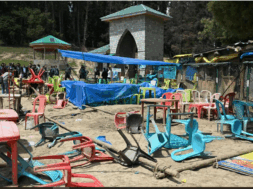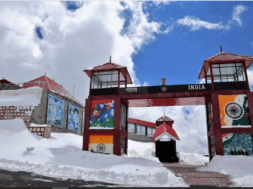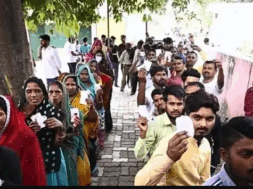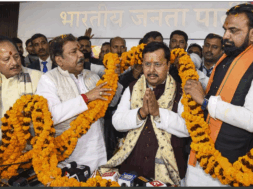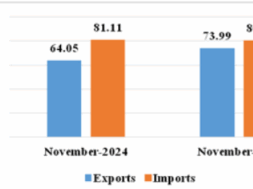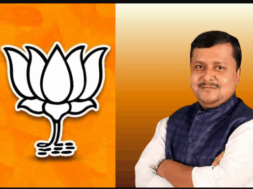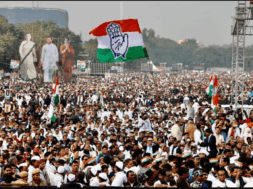
Manas Dasgupta
NEW DELHI, Sep 11: India and China seem to have arrived at a solution to arrest the deteriorating relations between the two countries and take fresh steps to ensure disengagement of troops and de-escalate the situation along the Line of Actual Control.
Amidst the gloomy situation after the defence ministers of the two countries failed to break the ice four days ago, the meeting between the two foreign ministers, S Jaishankar and his Chinese counterpart Wang Yi, in Moscow on Thursday night turned out to be more fruitful with the two sides succeeding to hammer out at least a five-point agreement and reach an understanding that both sides should take guidance from the consensus reached by leaders of the two countries, the prime minister Narendra Modi and the Chinese president Xi Jinping, on developing India-China relations, and ensure differences do not become disputes.
A joint statement was also issued after the two-and-half hours of bilateral talks along with their aides on the sidelines of the Shanghai Cooperation Organisation meeting in Moscow between Jaishankar and Wang Yi, a development not seen after the Rajnath Singh – Fenghe conclave on September 6 at the same venue.
According to a statement issued by the Ministry of External Affairs on Friday, both ministers had a “frank and constructive” discussion on the developments in the India-China border areas, as well as on India-China relations.
It said the two foreign ministers agreed the current situation was not in the interest of either side. “They agreed therefore that the border troops of both sides should continue their dialogue, quickly disengage, maintain proper distance and ease tensions,” the MEA statement said.
The two ministers also agreed both sides should abide by all existing agreements and protocol on China-India boundary affairs, maintain peace and tranquility in the border areas and avoid any action that could escalate matters, the statement said.
The two sides agreed to continue to engage in dialogue and communication through the special representative mechanism on the India-China boundary question. They also agreed, in this context, that the Working Mechanism for Consultation and Coordination on India-China border affairs (WMCC) should continue its meetings.
The ministers agreed that as the situation eases, the two sides should expedite work to conclude new Confidence Building Measures to maintain and enhance peace and tranquility in border areas.
The joint statement, however, give an indication that the current Confidence Building Measures (CBMs) between the two countries had failed to yield much results forcing the two foreign ministers to discuss developing new CBMs for improving the relations.
The ongoing, four-month long tensions along the Line of Actual Control (LAC) in eastern Ladakh indicates that some half-a-dozen boundary agreements and dozens of rounds of talks – including 22 rounds under the high-profile Special Representatives (SR) mechanism – failed to prevent what happened on the night of June 15 in Galwan Valley – the death of soldiers and the rapid erosion of trust.
Until now, the main agreements which bind New Delhi and Beijing to maintain peace at the border are the Agreement on the Maintenance of Peace and Tranquility along the Line of Actual Control in the Sino-Indian Border (1993), Agreement on Confidence-Building Measures in the Military Field along the Line of Actual Control in the Sino-Indian Border (1996), and Border Defence Cooperation Agreement between India and China (2013), which list ways to reduce misunderstandings between the two countries along the border, including prohibiting one side from actively following or tailing the patrols of the other side.
Other agreements signed in 2005 and 2012 talk about building CBMs, the political parameters and guiding principles of settling the boundary question and the setting up of the Working Mechanism for Consultation and Coordination on China-India Border Affairs.
New Delhi believes that Beijing’s action at Galwan Valley reneged on three of the key bilateral agreements – of 1993, 1996 and 2013 – which have kept the disputed boundary mostly quiet.
“The two foreign ministers agreed that as the situation eases, the two sides should expedite the completion of new mutual trust-building measures to maintain and enhance peace and tranquility in the border area,” said the statement issued after external affairs minister S Jaishankar and Chinese foreign minister Wang Yi met in Moscow on the sidelines of the Shanghai Cooperation Organisation (SCO) foreign ministers’ meeting on Thursday.
It did not detail what the CBMs could be but does indicate New Delhi and Beijing believe more measures need to be put in place before the situation spirals out of control in the hostile Himalayan terrain.
A statement issued by the Chinese embassy said “the two sides reached a five-point consensus” regarding the current situation after a “full, in-depth discussion.”
“Wang said China-India relations have once again come to a crossroads. But as long as the two sides keep moving the relationship in the right direction, there will be no difficulty or challenge that can’t be overcome,” it claimed quoting the minister.
“The Indian side does not consider the development of India-China relations to be dependent on the settlement of the boundary question and India does not want to go backwards,” the statement said quoting quoting Jaishankar.
Before the bilateral meeting, the foreign ministers of Russia, India and China (RIC) held an hour-and-half long lunch meeting, which was hosted by Russian Foreign Minister Sergey Lavrov, in which Russia officially handed over the chairmanship of the RIC to India.
A joint statement after the RIC meeting said the ministers exchanged views on further strengthening Russia-India-China trilateral cooperation as well as “topical issues of international and regional importance, in the spirit of mutual understanding, friendship and trust”. It also said the ministers noted that “common development and cooperation of the three countries is conducive to promoting global growth, peace and stability”.
Recalling their video-conference on June 23 on the occasion of the 75th anniversary of the victory in the Second World War and the creation of the United Nations, the statement said the ministers reiterated their “support for inclusive multilateralism” and “respect for universally recognized principles of international law”.
After the RIC meeting, and before heading for the bilateral meeting with Wang, Jaishankar tweeted, “Attended the RIC Foreign Ministers Meeting hosted by FM Lavrov in Moscow. Thank him for his warm hospitality. India takes on the Chair of the RIC process.”
A spokesman of the external affairs ministry had stated in Delhi on Thursday before the Jaishankar – Yi meeting that “both India and China are in regular touch through diplomatic and military channels to resolve the situation… and this was also the consensus when the two defence ministers met. As far as our position goes, Indian side is committed to resolving the current situation on the India-China border through peaceful negotiations.”
This was the second meeting of the foreign ministers of Russia-India-China, or the RIC grouping, since the border stand-off began early May. The last such meeting, held over video-conference on June 23, was the first face-time between Jaishankar and Wang after the Galwan clash.
On June 17, Jaishankar and Wang spoke on the telephone over the June 15 border clash, in which 20 Indian soldiers were killed.
At the RIC meeting in Moscow, the ministers agreed that the three countries, with strong scientific and industrial capacities, could make a significant contribution towards mitigating the impact of the Covid-19 pandemic. The joint statement said that Jaishankar and Wang thanked Lavrov for the chairmanship of RIC and the meetings/conferences organized during the past one year.
The friction and violence have impacted economic and trade ties besides dampening people-to-people exchanges – all in a year that’s marking the 70th anniversary of the establishment of Sino-India diplomatic relations. The new round of friction has also hit the expanding economic interdependence between the two countries.
Jaishankar and Wang, however, seem to agree that there was an urgent need to disengage from the hostility and reset the engagement both diplomatically and militarily which indicated from the joint statement that both agreed “the current situation in the border areas is not in the interest of either side”, and “therefore…the border troops of both sides should continue their dialogue, quickly disengage, maintain proper distance and ease tensions.”
The ministers agreed that “both sides shall abide by all the existing agreements and protocol on China-India boundary affairs, maintain peace and tranquility in the border areas and avoid any action that could escalate matters.”

